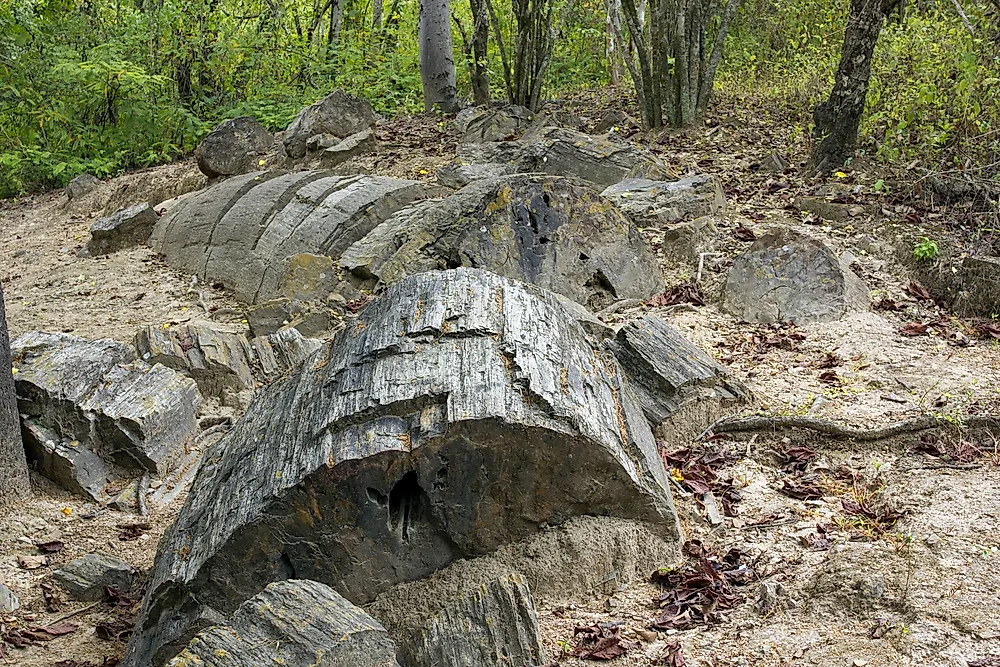What Is Petrified Wood?

Petrified wood refers to wood which is millions of years in age and has gone through the process of petrification, a type of fossilization where it turns into a stone mold after minerals replace its organic structure over a long period. Petrified wood has different colors, brought about by the type of minerals within the wood. For instance, red oxide petrified wood shows the presence of iron oxide, petrified wood made of copper is normally blue, green petrified wood is primarily composed of either cobalt or copper, while that composed of carbon is usually black. Petrification is a slow process, normally taking millions of years to take place.
Petrified Forests
Petrified wood has been unearthed in virtually all regions of the world, from Ecuador to Namibia. In many of the regions, the petrified wood is found in high concentrations after being formed from a prehistoric forest, and are known as petrified forests. Some examples of these forests include the Petrified Forest of Arizona, the Petrified Forest of Sarmiento in Argentina, Petrified Forest of Lesvos in Greece, and Ecuador’s Puyango Petrified Forest.
Puyango Petrified Forest, Ecuador
Ecuador’s provinces of Loja and El Oro are home to the Puyango Petrified Forest. Puyango Petrified Forest has one of the world’s biggest collections of petrified trees. Petrified trees in this forest are as large as 50 feet in length and 6.5 feet in diameter. The oldest exhibits found in the Petrified Forest are over half a billion years in age, while the most recent ones are about 60 million years old. However, the average age of the petrified trees is 100 million years.
Jaramillo Petrified Forest, Argentina
The Jaramillo Petrified Forest is a fossilized forest situated in Santa Cruz, Argentina. This Petrified Forest is millions of years of age and features some trees which are over 180 million years in age. Archaeologists agree that the trees found in the Petrified Forest are primarily made up of coniferous trees particularly of the Araucaria mirabilis species. Some large specimens of fossilized trees are 11 feet in diameter and as much as 328 feet in length. Additionally, there are numerous fossilized cones of the trees also found in the Jaramillo Petrified Forest. The prehistoric trees are believed to have been petrified in the Cretaceous Era, just as the Andes Mountains were being formed as the region witnessed volcanic eruptions that covered the forests with lava and volcanic ash. In modern times, the region is home to small spiny shrubs such as the Chiliotrichum diffusum and Berberis microphylla due to its arid nature.
Petrification Process
The process of petrification involves the conversion of the organic tissue in plants into stone after minerals replace the cell walls’ cellulose. In the first stage of the process, the dead and sometimes living trees are buried under the earth’s surface either under volcanic ash or sediment. Such an environment is void of oxygen and therefore preventing aerobic decomposition from taking place. While buried, the trees absorb mineral-laden water sipping from the surface which slowly transforms the plant’s internal structure. Resultantly, the petrified wood gets stone properties while retaining its original plant structure, which is in a few exhibits observed to be microscopically accurate.











